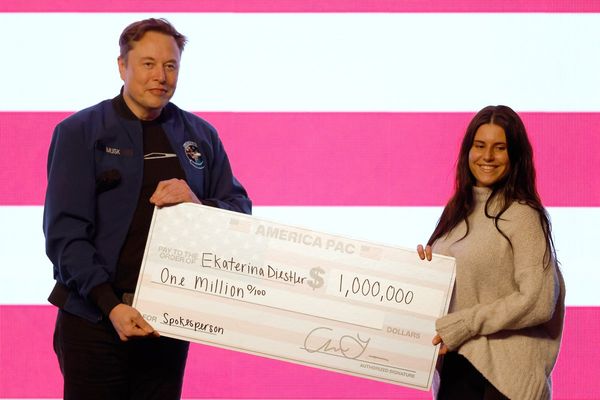
The defining image of the British racing driver Alain de Cadenet, who has died aged 76, is likely to remain the viral clip of him standing on the grass at the Imperial War Museum’s Duxford airfield in 1996, smoothly delivering an introduction to camera, when a Supermarine Spitfire suddenly appears from behind him, flying at zero altitude, its propeller almost giving him an impromptu haircut.
Even the roar of the plane’s Merlin engine cannot drown the series of expletives – part shock, part terror, part sheer joy and exhilaration – with which a ducking De Cadenet responds.
Such wizard pranks – such as the time he tested his Le Mans prototype on the M4 late at night – were as much a part of the De Cadenet legend as his charm and film-star looks. Although born just after the end of the second world war, he seemed to have arrived with a polka-dot silk scarf already around his neck, belonging to the world of dogfights on the track and in the air.
It was easy to imagine him carousing with the Bentley Boys after another victory at Le Mans in the 1920s or lounging in a deckchair outside the control tower at a Battle of Britain fighter base, waiting for someone to shout “scramble”.
But life for De Cadenet was not an endless series of larks and escapades. When he raced, it was in earnest, as he showed when he entered and co-drove a car that finished third at Le Mans in 1976. He drove in the 24-hour event 14 times between 1971 and 1986, often in a car bearing his own name, run from a mews garage in central London. He was also the leading authority on King George V stamps, advising the Royal Mail and, it was said, the Queen, on their collections. Later he became a TV presenter.
The son of a French air force lieutenant, Maxime-Jacques de Cadenet, and his English wife, Valerie (nee Braham), he was educated at Framlingham school in Suffolk. His first motorbike was a BSA Bantam, his first car a pre-war MG Midget for which he paid five guineas. He began his working life as a fashion and music photographer, but when a friend invited him to a race meeting at Brands Hatch, he was impressed by the fact that his girlfriend disappeared with a racing driver.
A week later he was back there in overalls and helmet, driving an AC Ace and requiring the assistance of a friend to secure a racing licence on the spot.
Deciding that single-seater racing was too expensive, he opted for entering sports car events, first with a Porsche bought from a friend, and discovered that he enjoyed the challenges posed by such demanding classic circuits as Spa-Francorchamps in Belgium and the Nürburgring’s 14-mile Nordschleife in Germany.
His first Le Mans, in 1971, came at the wheel of a Belgian-entered Ferrari 512M, an extremely fast car which he drove with only one eye working properly, the other having been injured in a crash in the Sicilian mountains a few weeks earlier, during the Targa Florio endurance race.
The following year, having failed to persuade Enzo Ferrari to sell him one of his latest cars, he secured £500 in sponsorship from Duckhams Oil and commissioned the gifted young South African designer Gordon Murray to turn a Formula One Brabham into a sports car suitable for Le Mans. Sharing the driving with the experienced Chris Craft, he finished 12th.
For 1975 he acquired a Lola that would form the basis of his most successful Le Mans car, finishing 14th, third and fifth in successive years, always with Craft as his co-driver and invariably competing against teams with much greater resources. After their third place finish in 1976 they were invited to drive a lap of honour before the British Grand Prix at Brands Hatch, in front of a full house.
In 1980 De Cadenet and a new co-driver, Desiré Wilson, went to Le Mans having astonished the sports car world by winning the 1000km of Monza and the Six Hours of Silverstone races, in the new Lola-based De Cadenet-Ford LM-4. After Wilson overturned the car during practice, the stewards refused permission for her to race, claiming she had not posted the necessary qualifying time. With François Migault sharing the driving, De Cadenet finished seventh.
After folding his own team, he raced Porsches and Courages at Le Mans before beginning a new career as a presenter of TV programmes about cars and aeroplanes for various cable channels, including the popular and long-running Victory by Design series for the Speed Channel.
Active in the world of classic racing, he was often seen at the wheel of the sort of Alfa Romeos that had won at Le Mans and the Mille Miglia before the second world war, including his own 8C 2300.
He is survived by his second wife, Alison (nee Larmon), their son, Aidan, and Amanda and Alexander, the children of his first marriage to Anna (nee Gerrard), an interior designer and former model, which ended in divorce, and three grandchildren.
• Alain de Cadenet, racing driver, born 27 November 1945; died 2 July 2022







